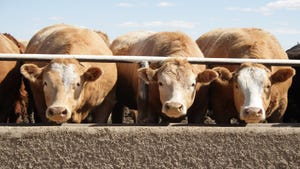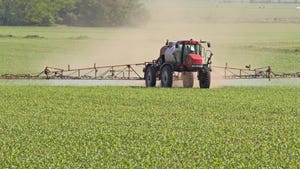
This last week was a game changer for US agricultural commodities. December corn closed the week up 28.25 cents. Corn experienced a monthly key reversal between Friday and Monday on dry weather forecast.
Funds came into the week short 316,000 contracts (a record for this time of year) and bought 20-30,000 contracts per day in the last 3 days of the week. November soybeans rallied 35.5 cents confirming a headed shoulder technical bottom. December Kansas City wheat closed up 5.75 cents as combines moved into frostbitten wheat fields.
These dramatic moves changed the entire attitude on the farm as hopes for a profitable price exploded just ahead of the 4th of July fireworks celebration.
The week was riddled with complex news; here are a few headlines digested by the market:
Hot and dry 14-day forecast causing concern for some pollinating corn
Rumor that China buys more U.S. corn and beans
No deliveries
Rumors 35 cargoes corn traded OO - some U.S. PNW
COVID-19 hits record and some states closing bars, restaurants, gyms theaters and parks – threatening economic recovery
U.S. Fed buys corporate bonds sending Dow sharply higher
PRC (China) finds new hog flu virus believed to transfer to humans, but claim is not a major threat
USDA report finds 230 mil bu. MORE old crop corn, but loses potential of 972 mil bu. in new crop production due to a 5 million corn acre decline. No significant changes in beans. USDA once again stumps traders by losing a total of 7 million acres versus last year’s “find” of 10 million acres.
China warns U.S. to stop meddling in its politics and moves forward with Hong Kong national security issues
U.S. Senate passes bill allowing U.S. to levy sanctions on Chinese officials, businesses and banks who undermine Hong Kong autonomy
U.S. may limit tech exports to Hong Kong and revokes special trade status
4.8 M jobs reported, unemployment at 11%, nearly double the jobs gains than expected. House pass $1.5 trillion Infrastructure bill
China bought 202,000 metric tons of U.S. corn and 126,000 metric tons of soybeans Thursday in addition to weekly exports
Thursday mid-day weather report suggested a dirty ridge – allowing some storms into corn belt
EPA indefinitely postpones Biofuel Blending Mandate decision
What’s it all mean?
That is a lot to take in. So let's try to simplify for you.
The USDA report changed the dynamics of supply and demand equilibrium. By reducing acres, projected corn ending stock could fall from 3.3 billion bushels (USDA) to approximately 2.566 (that is our estimate assuming a good yield). This means that trade expectations of $3 to $2.80 corn was undervaluing the market and those who are short may be caught in a bad position.
Using current volume to price ratios, we can calculate it could take a 65-cent rally from the low and 8.5 days of trading to liquidate the fund short. Temper this with active farm selling on the rally, and it is realistic to think $3.75 is possible.
Evaluating how the market will trade short of that objective or exceed that objective will depend on upcoming weather during pollination and fill as well as macro influences.
Further accentuating the bullish or bearishness of the market are the macro economic and geopolitical influences. Here is the long and short of potential scenarios. A successful economic recovery is expected due to the unprecedented amount of money being injected into economies around the world. We are to the point where the debt/GDP hole is so big, we must see successful recovery. As such, recovery will be associated with inflation. In order to hire that laborer back we will have to pay him $18 per hour to get him off unemployment. He will spend more money. He will buy more items and can pay more for the same number of goods. Hence goods and services will price increase in order to keep corporations profitable. All of this spending will cause more income tax revenue and sales tax revenue. It will also likely result in higher home values, allowing those with more equity to borrow more and spend more. This is inflationary and will have a direct impact on food and fuel (good investments in recovery scenario).
Signs of economic failure
The other side of this coin would be a failure of economic recovery. The signs to watch for this are simple 1.) A resurgence of COVID-19 that would cause renewed shutdowns. 2.) A failure of international trade and alliances agreements, mainly the U..S-China trade deal. 3.) Increasing social unrest.
If you see these signs combined with a slowdown in freight or transportation, get out of Dodge.
Fear, or a retreat in consumer spending, could be the worst case scenario since the Great Depression. There is the possibility of a middle ground outcome of stagflation and struggle to recover like Japan in the 1980s. However, based on IMF and Fed reports and analysis of unprecedented size of fiscal injections and debt/GDP ratios, it would favor recovery and inflation with lower odds of failure.
We treat each client individually and watch their cost of production versus potential yield to calculate breakeven. We intend to use this rally to get all clients sold and eliminate the income risk of another downward spiral. We will structure our sales so that we are 100% sold against desired bushels, locking in an operating profit for our clients wherever possible. This will protect them if the market starts to sell off. However, our strategy will negate or offset sales on 50% of the bushels sold if the market moves higher. Thus we will be fully protected while allowing ourselves the opportunity to re-sell ½ of the bushels at a higher price if offered. The AgMarket.Net team puts out a weekly video that reviews the market and strategy. If you would like a free trial to this, please let us know as we would be more than willing to visit with you about your farm operation.
Contact Biedermann at 815-893-7443 or AgMarket.Net
The risk of loss in trading futures and/or options is substantial and each investor and/or trader must consider whether this is a suitable investment. AgMarket.Net is the Farm Division of John Stewart and Associates (JSA) based out of St Joe, MO and all futures and options trades are cleared through ADMIS in Chicago IL. This material has been prepared by an agent of JSA or a third party and is, or is in the nature of, a solicitation. By accepting this communication, you agree that you are an experienced user of the futures markets, capable of making independent trading decisions, and agree that you are not, and will not, rely solely on this communication in making trading decisions. Past performance, whether actual or indicated by simulated historical tests of strategies, is not indicative of future results. Trading infromation and advice is based on information taken from 3rd party sources that are believed to be reliable. We do not guarantee that such information is accurate or complete and it should not be relied upon as such. Trading advice reflects our good faith judgment at a specific time and is subject to change without notice. There is no guarantee that the advice we give will result in profitable trades. The services provided by JSA may not be available in all jurisdictions. It is possible that the country in which you are a resident prohibits us from opening and maintaining an account for you.
The opinions of the author are not necessarily those of Farm Futures or Farm Progress.
Read more about:
Covid 19About the Author(s)
You May Also Like






